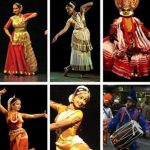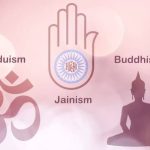
• The United Nations Educational, Scientific, and Cultural Organisation (UNESCO) is one of the UN’s specialised agencies. It wants to build peace by getting people from different countries to work together on Education, Science, and Culture.
• It is also a part of the United Nations Sustainable Development Group (UNSDG), which is a group of UN bodies and organisations working together to reach the Sustainable Development Goals (SDGs).
• UNESCO’s main office is in Paris, and it has more than 50 field offices all over the world.
• As of April 2020, it has 193 Members and 11 Associate Members. The General Conference and the Executive Board run it.
The Cook Islands, Niue, and Palestine are all part of UNESCO, but they are not part of the UN.
Even though Israel, Liechtenstein, and the United States are all part of the UN, they are not part of UNESCO.
Table of Contents
- 1 The goals of UNESCO
- 2 History Behind the Establishment of UNESCO
- 3 Areas of Specialization of UNESCO
- 4 Education Transforms Lives
- 5 Protecting Our Heritage and Fostering Creativity
- 6 Science for a Sustainable Future
- 7 Social and Human Sciences
- 8 Communication and Information
- 9 UNESCO’s Priorities Around the World
- 10 Africa
- 11 Gender Equality
- 12 Some of the Important Initiatives of UNESCO
- 13 Convention on World Heritage Sites and List
- 14 MAB – “Man and the Biosphere.”
- 15 IGGP – International Geoscience and Global Geoparks Programme.
- 16 International Hydrological Programme (IHP)
- 17 WWAP – World Water Assessment Programme.
- 18 IBSP – International Basic Sciences Programme.
- 19 Important Reports Released by UNESCO
- 20 UNESCO Science Report
- 21 Global Education Monitoring Report
- 22 1980 McBride Report
- 23 UNESCO’s Report on the State of Education in India: Children With Disabilities
- 24 UNESCO And INDIA: What is the Scenario?
- 25 Indian National Commission for Cooperation with UNESCO (INCCU)
- 26 What does “Intangible Cultural Heritage” mean?
- 27 The International Prizes from UNESCO and India
The goals of UNESCO
• UNESCO works towards a set of goals, such as:
Getting great education for everyone and learning for life
Using scientific understanding and policy for long-term growth
Taking care of new social and moral problems
Fostering ethnic diversity, intercultural dialogue and a spirit of peace
Through information and dialogue, we can build knowledge societies that are open to everyone.
Pays attention to “Africa” and “Gender Equality” as world priorities.
History Behind the Establishment of UNESCO
• In 1942, during the Second World War, the Conference of Allied Ministers of Education (CAME) was held in the United Kingdom. This was a meeting of the governments of European countries that were fighting against Germany and its supporters.
In November 1945, a United Nations Conference was held in London to set up an organisation for education and culture. This was done at the suggestion of CAME.
• At the end of the meeting, on November 16, 1945, UNESCO was formed.
In November and December 1946, the first meeting of the UNESCO General Conference took place in Paris.
Areas of Specialization of UNESCO
Education Transforms Lives
• Education changes people’s lives and is at the heart of UNESCO’s goal to build peace, end poverty, and promote sustainable development.
• The Organisation is the only UN group that is in charge of all parts of education.
• It has been given the job of leading the Global Education 2030 Agenda through Sustainable Development Goal 4.
“Education 2030 Framework for Action” (Incheon Declaration) is the plan for achieving the world education 2030 agenda.
• It works to improve education from pre-school through college education and even further.
• Topics include global democracy and sustainable development, human rights and gender equality, health and HIV/AIDS, and developing technical and vocational skills.
Protecting Our Heritage and Fostering Creativity
• It’s becoming clear that growth can’t last without a strong cultural element.
• UNESCO has taken three steps to make sure that culture is given its proper place in development strategies and processes:
Leads advocacy for culture and growth around the world.
Works with the rest of the world to set clear policies and law rules.
Works on the ground to help governments and local groups protect heritage, build up creative businesses, and promote cultural diversity.
• Some important agreements and international treaties that UNESCO has made to protect the cultural and natural heritage of the world are:
The Convention on the Protection and Promotion of the Diversity of Cultural Expressions was signed in 2005.
The Convention for the Protection of the Intangible Cultural Heritage was signed in 2003.
The Declaration on the Universal Values of Cultural Diversity (2001)
Convention on the Protection of the Underwater Cultural Heritage (2001)
Convention for the Protection of the World Cultural and Natural Heritage (1972)
The Convention on the Means of Prohibiting and Preventing the Illicit Traffic of Cultural Property was signed in 1970.
Science for a Sustainable Future
• Science gives us the tools we need to find answers to the tough economic, social, and environmental problems we face today, as well as to make our societies greener and more sustainable.
• UNESCO works to help countries invest in Science, Technology, and Innovation (STI), make national science policies, reform their science systems, and build the skills needed to use STI indicators to track and measure success.
• UNESCO also helps its member states make better choices about how to use science and technology, especially in the area of bioethics.
Social and Human Sciences
• UNESCO helps people make and use knowledge to make societies that are fair and include everyone. It also helps people understand each other and work together to build lasting peace.
• It helps member states understand each other better through its intergovernmental programmes like Management of Social Transformations (MOST), its Youth Programme, and the Culture of Peace and Non-Violence Programme, which include projects for democracy and global citizenship, intercultural dialogue, and building peace.
Communication and Information
• UNESCO works to protect freedom of speech and the safety of journalists. It also fights internet hate speech, as well as disinformation and misinformation, by raising people’s awareness.
• It also supports everyone’s access to information and knowledge by supporting Open Solutions, such as Open Educational Resources, access for marginalised people, and multilingualism in Cyberspace.
UNESCO’s Priorities Around the World
Africa
• UNESCO is paying attention to 54 African countries with a plan that is stronger and more focused.
• The approval of the African Union Agenda 2063 and the 2030 Agenda for Sustainable Development set the stage for the African Economic Community and the African Renaissance.
Gender Equality
• UNESCO believes that as equal citizens, women and men should have the same rights, choices, skills, power, and knowledge.
• To build a sustainable future for everyone, girls, boys, women, and men need to have the information, values, attitudes, and skills they need to deal with gender differences.
• Some important steps that can be taken to reach the goal of gender equality are:
UNESCO’s Plan of Action for Gender Equality
Tools for Gender Equality
Gender Views
UNESCO Chairs and Networks for Women and Girls
UNESCO Prize for the Education of Girls and Women
Youth Mobile of UNESCO
________________________________________
Some of the Important Initiatives of UNESCO
Convention on World Heritage Sites and List
• The World Heritage Convention of 1972 brings together the ideas of protecting both nature and culture sites.
• The Convention says what kinds of natural or cultural places (called “World Heritage Sites”) can be put on the World Heritage List.
• The States Parties to the Convention are encouraged to include protection of cultural and natural heritage in regional planning programmes, set up staff and services at their sites, and do scientific and technical study on conservation.
• It shows how to use and run the World Heritage Fund.
• There are 1154 World Heritage places in 167 different countries around the world. India, on the other hand, has 40 World Heritage Sites, 30 of which are cultural properties, 7 of which are natural properties, and 1 of which is a mix of the two.
India’s 40th world heritage site is the Harappan city of Dholavira, which is in the state of Gujarat.
India has 39 World Heritage Sites. The 39th one is the Ramappa Temple in Telangana.
The first and only “Mixed World Heritage Site” in India is Khangchendzonga National Park in Sikkim.
• The Union Ministry of Culture put forward Sacred Ensembles of the Hoysalas temples as a possible World Heritage site for 2022 and 2023.
MAB – “Man and the Biosphere.”
• It is an international scientific project that aims to improve the relationship between people and their environments by using science.
• It encourages new ways to grow the economy that are socially and culturally acceptable and good for the environment.
• There are currently 701 sites in 124 countries that are part of the World Network of Biosphere Reserves. Twenty-one of these sites are in two different countries.
• India has 18 Biosphere reserves, but only 12 have been recognised globally by the MAB programme:
IGGP – International Geoscience and Global Geoparks Programme.
• The International Geoscience Programme (IGCP) uses the brainpower of a worldwide network of geoscientists to set the stage for the future of our planet. It focuses on responsible resource extraction, resilience and preparedness for natural disasters, and adaptability in an era when the climate is changing.
• UNESCO Global Geoparks (UGGp) are laboratories for sustainable development that support the recognition and management of Earth heritage and the sustainability of local communities.
There are 177 UNESCO Global Geoparks in 46 different countries right now.
International Hydrological Programme (IHP)
• The Intergovernmental Hydrological project (IHP) is the only government-to-government project in the UN system that focuses on water research and management, as well as education and building up people’s skills in these areas.
WWAP – World Water Assessment Programme.
• The rising global water crisis threatens developing countries’ security, stability, and ability to protect the environment.
The main goal of the project is to look at how freshwater is changing around the world.
• It also makes sure that 31 UN-Water members and partners are working together on the World Water Development Report (WWDR).
IBSP – International Basic Sciences Programme.
• It is an international, multidisciplinary programme set up by UNESCO Member States to improve scientific cooperation between governments and boost national capacities in the basic sciences and science education.
Important Reports Released by UNESCO
UNESCO Science Report
• The UNESCO Science Report makes monthly maps of how Science, Technology, and Innovation (STI) are run around the world. Every five years, on November 10, which is World Science Day for Peace and Development, the study is released.
Global Education Monitoring Report
• The Global Education Monitoring (GEM) Report looks at how well the Sustainable Development Goal on education (SDG4) and its 10 targets, as well as other education goals in the SDG plan, are being met.
• The report looks at the different ways governments, schools, teachers, parents, the foreign community, and the private sector are held responsible for inclusive, fair, and high-quality education.
1980 McBride Report
• “Many Voices, OneWorld” is also the name of the MacBride Commission’s long report.
• It looked at communication problems in modern societies, especially those related to mass media and news. It also looked at the rise of new technologies and tried to come up with a plan (called the “New World Information and Communication Order”) to solve these problems and help peace and human development.
UNESCO’s Report on the State of Education in India: Children With Disabilities
• This year’s report is the first yearly report that UNESCO has put out in India.
• It talks about what has been done and what needs to be done to help children with disabilities (CWDs) get an education.
• The UNESCO State of Education Report 2021 was mostly based on a study of data from the Periodic Labour Force Survey (PLFS) and the Unified District Information System for Education (UDISE) from 2018-19.
• It is meant to be a guide for better implementing the National Education Policy (NEP) and achieving Sustainable Development Goal (SDG) 4 (goal 4c on teachers).
Goal 4c: By 2030, there should be a lot more trained teachers, including through international cooperation for teacher training in developing countries, especially the least developed countries and small island developing states.
________________________________________
UNESCO And INDIA: What is the Scenario?
Indian National Commission for Cooperation with UNESCO (INCCU)
• India has been a part of UNESCO since it was founded in 1946.
• According to the UNESCO law, each Member State must have a main body that works with the Organisation. So, the Indian government set up the Indian National Commission for Cooperation with UNESCO (INCCU).
• There are two UNESCO offices in India.
The South and Central Asian countries of Afghanistan, Bangladesh, Bhutan, India, Iran, Maldives, Mongolia, Myanmar, Nepal, Pakistan, and Sri Lanka are all covered by the New Delhi cluster office.
The Government of India fully supports and pays for the MGIEP, which is the Mahatma Gandhi Institute of Education for Peace and Sustainable Development.
• India will be on the Intergovernmental Committee of UNESCO’s 2003 Convention for the Safeguarding of the Intangible Cultural Heritage (ICH) from 2022 to 2026.
India has been a part of the ICH Committee twice, from 2006 to 2010 and from 2014 to 2018.
Before, Durga Puja in Kolkata was put on the Intangible Cultural Heritage (ICH) of Humanity Representative List by UNESCO.
What does “Intangible Cultural Heritage” mean?
• Intangible cultural heritage is made up of practises, expressions, knowledge, and skills that are important to a community, a group, or a person.
• It is often shown in one of the following ways, which are also called “living cultural heritage”:
Verbal History
Shows and plays
Social Practises
Rituals and celebrations
Knowing and doing things about nature and the world
Craftsmanship in the Old Way
• India will be on the Intergovernmental Committee of UNESCO’s 2003 Convention for the Safeguarding of the Intangible Cultural Heritage (ICH) from 2022 to 2026.
India has been a part of the ICH Committee twice, from 2006 to 2010 and from 2014 to 2018.
Before, Durga Puja in Kolkata was put on the Intangible Cultural Heritage (ICH) of Humanity Representative List by UNESCO.
The International Prizes from UNESCO and India
• The UNESCO-Madanjeet Singh Prize for Promoting Non-Violence and Tolerance
The UNESCO Goodwill Ambassador, Indian artist, writer, and diplomat Mr. Madanjeet Singh, gave a lot of money to make it happen. The prize is a tribute to his lifelong work for peace and equality.
The Prize was made in 1995, which was both the 125th anniversary of Mahatma Gandhi’s birth and the UN Year for Tolerance.
The Prize has been given out every two years since 1996, and since 2002, it has been worth US$100,000.
• The UNESCO Kalinga Prize for Getting Science Into the Public Eye
It is an international award made by UNESCO in 1951 thanks to a gift from Mr. Bijoyanand Patnaik, the founder and president of the Kalinga Foundation Trust in India.

















